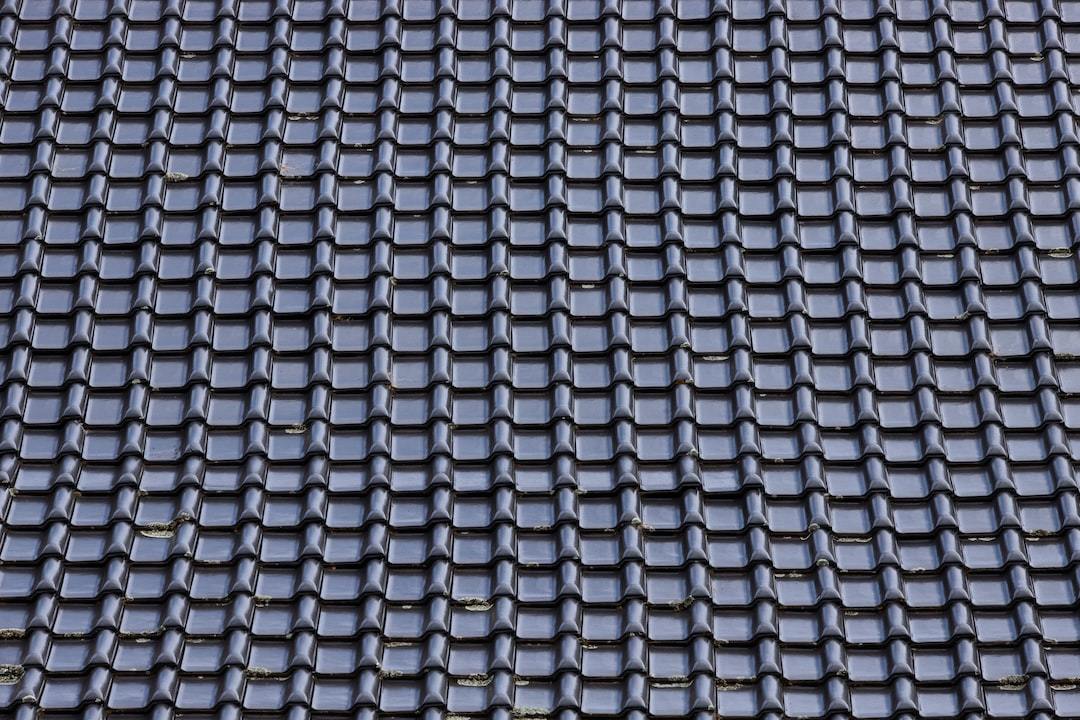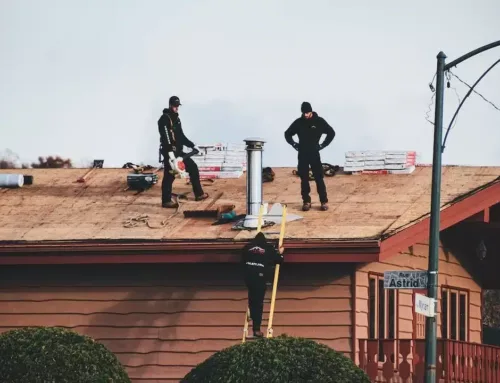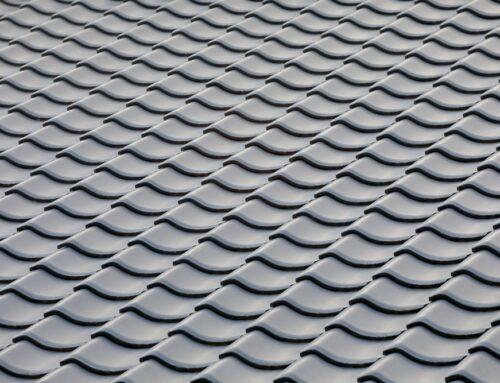Learning how to repair a tile roof is an essential skill for homeowners in the Kansas City metropolitan area, as it can save you both time and money. Tile roofs are known for their durability and aesthetic appeal, but they can still experience damage from harsh weather conditions or natural wear and tear. This guide will take you through all the steps of repairing your tile roof, from recognizing problems to replacing broken tiles.
We’ll begin by discussing common issues with tile roofs and the materials used in repairs. Next, we’ll delve into identifying cracks and holes in your tiles before moving on to replacing broken tiles properly. We’ll also address leaks beneath tiles that may be causing water damage within your home.
Safety precautions are of utmost importance when working on any roofing project; therefore, we will provide guidance on personal protective equipment and proper ladder usage while performing repairs. Finally, discover why Pyramid Roofing is the go-to expert for all your tile roof repair needs in the Kansas City metropolitan area.
Table of Contents:
- Tile Roof Repair Basics
- Understanding Common Issues with Tile Roofs
- Materials Used in Tile Roof Repairs
- Identifying Cracks and Holes
- Replacing Broken Tiles
- Addressing Leaks Beneath Tiles
- Safety Precautions for Tile Roof Repairs
- Pyramid Roofing Expertise in Tile Roof Repair
- Conclusion
Tile Roof Repair Basics
Tile roofs are popular for their durability, energy efficiency, and low maintenance requirements. However, they can develop problems over time that require repair or replacement. In this section, we will cover the basics of repairing tile roofs by addressing small cracks or holes with plastic roofing cement and replacing broken tiles if needed.
Understanding Common Issues with Tile Roofs
Damaged tiles: Tiles can become cracked or chipped due to various factors such as weather conditions and natural wear-and-tear. Damaged tiles may lead to leaks in your roof if not addressed promptly.
Fiber cement deterioration: Over time, fiber cement used in some types of tile roofing may deteriorate causing water damage within your home.
Masonry issues: Masonry components like mortar joints between concrete tiles could also be a source of leakage when they begin to break down.
Materials Used in Tile Roof Repairs
- Tiles: To replace damaged roof tiles, you’ll need new ones that match the existing style and color on your roof.
- Roofer’s tools: A variety of specialized tools are required for removing old materials safely from the rooftop without damaging surrounding areas (e.g., pry bars).
- Caulk gun & plastic roofing cement: This adhesive is essential for sealing any gaps around newly installed pieces while preventing future leaks.
- Roofing nails: Nails specifically designed for roofing projects are necessary to secure tiles in place and ensure a long-lasting repair job.
By understanding the common issues with tile roofs and having the right materials on hand, you can effectively address small cracks or holes in your roof. However, if you’re unsure about how to proceed or feel uncomfortable working at heights, it’s best to consult professional roofing contractors, such as Pyramid Roofing – one of Kansas City’s top service providers when it comes to repairing tile roofs.
Tile roof repair is a complex process that requires knowledge and skill to ensure the job is done correctly. Identifying cracks and holes in tile roofs can be even more challenging, but with proper preparation, it’s possible to make sure these issues are addressed properly.
Key Takeaway:
To repair a tile roof, one needs to understand common issues such as damaged tiles, fiber cement deterioration, and masonry problems. The materials required for the job include new tiles that match the existing ones, specialized tools like pry bars, plastic roofing cement, and roofing nails. It’s best to consult professional roofing contractors if unsure about how to proceed or uncomfortable working at heights.
Identifying Cracks and Holes
One common issue with tile roofs is the development of small cracks or holes, which can be repaired using plastic roofing cement. In this section, we’ll discuss how to identify these defects effectively before proceeding with repairs while also factoring in Pyramid Roofing’s expertise as one of Kansas City’s top service providers when it comes to roofing.
Scrubbing the Affected Area Thoroughly
The first step in identifying damaged areas on your tile roof is to perform a thorough inspection. Begin by visually examining each individual tile for signs of damage such as chips, cracks, or missing pieces. Using a soft-bristled brush and soapy water, delicately clean off any dirt or grime from the tiles to gain an improved view of the damage. Once the surface is cleaned, you can better assess the damage to your tiles.
Filling the Crack or Hole Properly
- Tile Roof Repair: If you notice small cracks or holes in your tile roof, begin by cleaning out any loose debris within them using a wire brush.
- Roofing Cement: Apply roofing cement into these openings using either a putty knife or a caulking gun depending on size, location, and accessibility. Ensure that the entire void is filled and completely sealed against future moisture infiltration to prevent potential leaks from developing further down the line due to improper repair workmanship.
- Fiber Cement: For larger cracks or holes, consider using fiber cement to fill the damaged area. This material is more durable than plastic roofing cement and can better withstand harsh weather conditions.
By taking these steps to identify and address any small cracks or holes in your tile roof, you’ll be well on your way toward maintaining its longevity and preventing costly water damage down the line. And with Pyramid Roofing’s expertise at hand, you can rest assured that your repairs will be completed efficiently and effectively by a team of skilled professionals.
Once any fissures and gaps have been located, it is critical to fill them appropriately in order to avoid additional harm. Replacing broken tiles is the next step toward restoring your roof back to its original condition.
Key Takeaway:
To repair small cracks or holes in a tile roof, start by identifying the damaged areas and scrubbing them thoroughly. Once you’ve located the problem spots, use plastic roofing cement or fiber cement to fill and seal any voids properly. With these steps, you can maintain your tile roof’s longevity and prevent water damage with Pyramid Roofing’s expert help.
Replacing Broken Tiles
If a tile roof is damaged due to breakage or storm damage, you’ll need to replace the broken tiles. Here’s how to safely remove damaged tiles and install new ones while ensuring proper alignment and security on your roof.
Removing Damaged Tiles Carefully
To begin the process of tile replacement, first, locate the damaged area on your tile roof. Wearing safety gear such as gloves, non-slip shoes, and a harness if necessary, climb the ladder to access the damaged area on your tile roof. Gently lift up the edges of adjacent tiles using a pry bar or roofing tool without causing further damage to surrounding areas. Once you have access to the broken tile, use caution when removing it from its position by sliding it out horizontally so that no additional pressure is applied to neighboring tiles.
Installing New Replacement Tiles Correctly
Prior to installing new roof tiles, inspect them for any defects such as small cracks or chips that could lead to future issues down the line. When ready for installation, slide in your replacement tile beneath existing overlapping pieces until it sits flush with other materials present (such as fiber cement underlayment). Ensure correct placement by aligning top edges evenly before securing into place using either plastic roofing cement or masonry nails depending upon the type chosen during initial purchase – concrete vs clay varieties respectively.
In order to maintain structural integrity and overall appearance, always double-check your work after completion to ensure there are no gaps between sections where water might infiltrate and cause potential leaks over time if left unaddressed.
Seeking Professional Help for Tile Roof Repairs
While it is possible to make repairs and replace damaged tiles on your own, seeking the help of professional roofing contractors, like Pyramid Roofing, can save you time and ensure a high-quality result. With their expertise in tile roofing, they will be able to assess the extent of damage and provide appropriate solutions tailored specifically for your home’s needs while ensuring safety throughout the entire process.
Replacing broken tiles is an important step in maintaining a safe and secure roofing system. Addressing leaks beneath the tiles requires a careful inspection to ensure any underlying issues are properly addressed.
Key Takeaway:
To repair a tile roof, start by carefully removing damaged tiles using appropriate safety gear and tools. When installing new replacement tiles, inspect them for defects and ensure correct placement to prevent potential leaks over time. Seeking professional help from roofing contractors can save time and provide high-quality results tailored specifically to your home’s needs while ensuring safety throughout the entire process.
Addressing Leaks Beneath Tiles
Leaks beneath individual tiles may occur due to defective membrane layers located directly under the tiling itself rather than through visible cracks themselves (which is often more likely). This section will explain how homeowners can identify such leaks by inspecting both interior attic spaces as well exterior surfaces looking for signs of moisture infiltration, staining, discoloration, and areas of pooling water. Once the source of the problem has been pinpointed, it’s essential to address the underlying cause – typically a defective membrane layer located directly under the tiling itself.
Inspecting for Hidden Leaks Within Your Home
To detect hidden leaks in your tile roof, start by inspecting your attic space. Look for any signs of water damage or mold growth on insulation materials and wooden structures. Pay close attention to areas near vents, chimneys, and other roof penetrations where moisture might find its way inside. Additionally, check your home’s ceilings and walls for any damp spots or discolored patches that could indicate a leaky roof.
Fixing Leaks Caused by Issues with Protective Membranes
- Determine if there are damaged membranes: Inspect the area around each suspected leak location carefully to determine whether there are issues with protective membranes underneath tiles. If you notice any tears or punctures in these layers that allow water penetration into the roofing structure proper repairs must be made immediately to prevent further damage occurring over time.
- Contact professional help: Repairing damaged protective membranes requires specialized skills and expertise; thus it’s recommended to contact Pyramid Roofing, one of Kansas City’s top service providers when it comes to dealing with such problems effectively and efficiently, ensuring your home remains safe and dry throughout the year.
- Prevent future leaks: To avoid similar issues in the future, consider investing in high-quality underlayment materials and ensure proper installation techniques are followed during roof construction or replacement projects. This will help minimize the chances of developing leaks beneath tiles over time while also extending the overall lifespan of your tile roofing system significantly.
By addressing leaks beneath tiles, homeowners can prevent further damage and costly repairs in the future. Moving on to safety precautions for tile roof repairs, it is important to take into account personal protective equipment as well as safe ladder usage and movement on the roof.
Key Takeaway:
To repair a tile roof, homeowners should inspect both interior and exterior surfaces for signs of leaks caused by defective membrane layers. If there are issues with protective membranes, it’s best to contact professional help like Pyramid Roofing to prevent further damage and invest in high-quality underlayment materials to avoid future leaks.
Safety Precautions for Tile Roof Repairs
When working on tile roof repairs, it’s essential to take necessary safety precautions. This section will cover the importance of wearing protective gear and using sturdy equipment while also being mindful of weight distribution on your roof as you move around to prevent further damage or injury.
Personal Protective Equipment for Roofing Work
To ensure your safety during tile roof repair, always wear appropriate personal protective equipment (PPE). This includes a hard hat, gloves, slip-resistant footwear, and eye protection. Additionally, consider using a harness system if you’re working at significant heights or on steep roofs to reduce the risk of falls and injuries.
Proper Ladder Usage and Safe Movement on the Roof
- Select the right ladder: Choose an extension ladder that extends at least three feet above the edge of your roof. Ensure it is in good condition with no missing parts or damage.
- Ladder placement: Place your ladder on level ground away from any power lines or other hazards. Make sure it is secure by anchoring its base properly before climbing up.
- Maintain three points of contact: When ascending or descending ladders, keep both hands free by carrying tools in a tool belt rather than holding them manually. This allows you to maintain constant grip support throughout the moving process, thereby minimizing potential accidents occurring due to slippage or missteps.
- Avoid walking directly over damaged tiles: Stepping onto cracked tiles can cause further breakage. Instead, walk alongside affected areas, distributing body weight evenly across multiple stable surfaces to minimize potential harm caused by inadvertently worsening existing issues.
By following these safety precautions, you can ensure a successful and secure tile roof repair process. Remember that if you’re unsure about your ability to safely perform the repairs or feel uncomfortable working at heights, it’s always best to consult with professional roofing contractors like Pyramid Roofing who have extensive experience in handling such tasks.
It is important to take all necessary safety precautions when performing tile roof repairs. Pyramid Roofing has the expertise and experience needed to ensure that your repair job will be completed correctly and safely.
Key Takeaway:
When repairing a tile roof, it’s crucial to take safety precautions such as wearing personal protective equipment (PPE), using sturdy equipment, and being mindful of weight distribution. Proper ladder usage is also essential, including selecting the right ladder, securing its base properly before climbing up, maintaining three points of contact while ascending or descending ladders, and avoiding walking directly over damaged tiles.
Pyramid Roofing Expertise in Tile Roof Repair
When it comes to repairing or replacing tile roofs, Pyramid Roofing is one of the top service providers in Kansas City. With their expert knowledge and experience in this field, homeowners can trust that their roofing issues will be resolved efficiently and effectively by choosing them as their go-to professionals.
Why choose Pyramid Roofing for your tile roof repair needs
There are several reasons why homeowners should consider Pyramid Roofing for all their tile roof repair needs:
- Experience: As a leading roofing contractor in the Kansas City metropolitan area, Pyramid Roofing has years of experience handling various types of tile roofs, including concrete tiles, fiber cement tiles, and masonry roofing.
- Safety: The team at Pyramid Roofing prioritizes safety while working on any project. They use proper personal protective equipment (PPE) and follow best practices when accessing your roof safely to make repairs.
- Detailed Inspection: Before starting any repair work, they thoroughly inspect your damaged tile roof to identify all potential problems such as missing tiles or water damage caused by leaks beneath the tiles.
- Craftsmanship: Paying attention to detail during every step of the process ensures high-quality results when fixing small cracks with plastic roofing cement or replacing broken tiles entirely.
Examples of successful tile roof repairs completed by Pyramid Roofing
To better understand how effective Pyramid’s services are when it comes to repairing damaged tile roofs, here are some examples showcasing their expertise:
- A homeowner in Kansas City had a tile roof with multiple cracked tiles and small leaks. Pyramid Roofing inspected the damaged area, removed the broken tiles, replaced them with new ones, and sealed any remaining cracks using plastic roofing cement.
- Another client faced issues with their concrete tile roof due to water damage from a leak beneath the tiles. The team at Pyramid Roofing identified the source of the problem, fixed it by addressing underlying membrane issues, and restored the affected area to its original condition.
With countless successful projects under their belt, Pyramid Roofing is your best choice for reliable and efficient tile roof repair services in Kansas City.
Key Takeaway:
Pyramid Roofing is a top service provider for repairing or replacing tile roofs in Kansas City. They have years of experience, prioritize safety, conduct detailed inspections, and pay attention to craftsmanship while fixing small cracks or replacing broken tiles entirely.
Conclusion
In the Kansas City region, tile roofs are a much-loved selection for homeowners due to their strength, longevity, and energy efficiency. Still, issues such as splits, openings, and seepage from tile rooftops can bring about more harm if left unchecked.
Repairing or replacing damaged tiles and addressing leaks requires proper techniques and safety precautions. Choosing Pyramid Roofing for your tile roof repair needs ensures expert solutions from an experienced team with reliable customer service.
If you need help repairing your tile roof, contact Pyramid Roofing today for a consultation!







